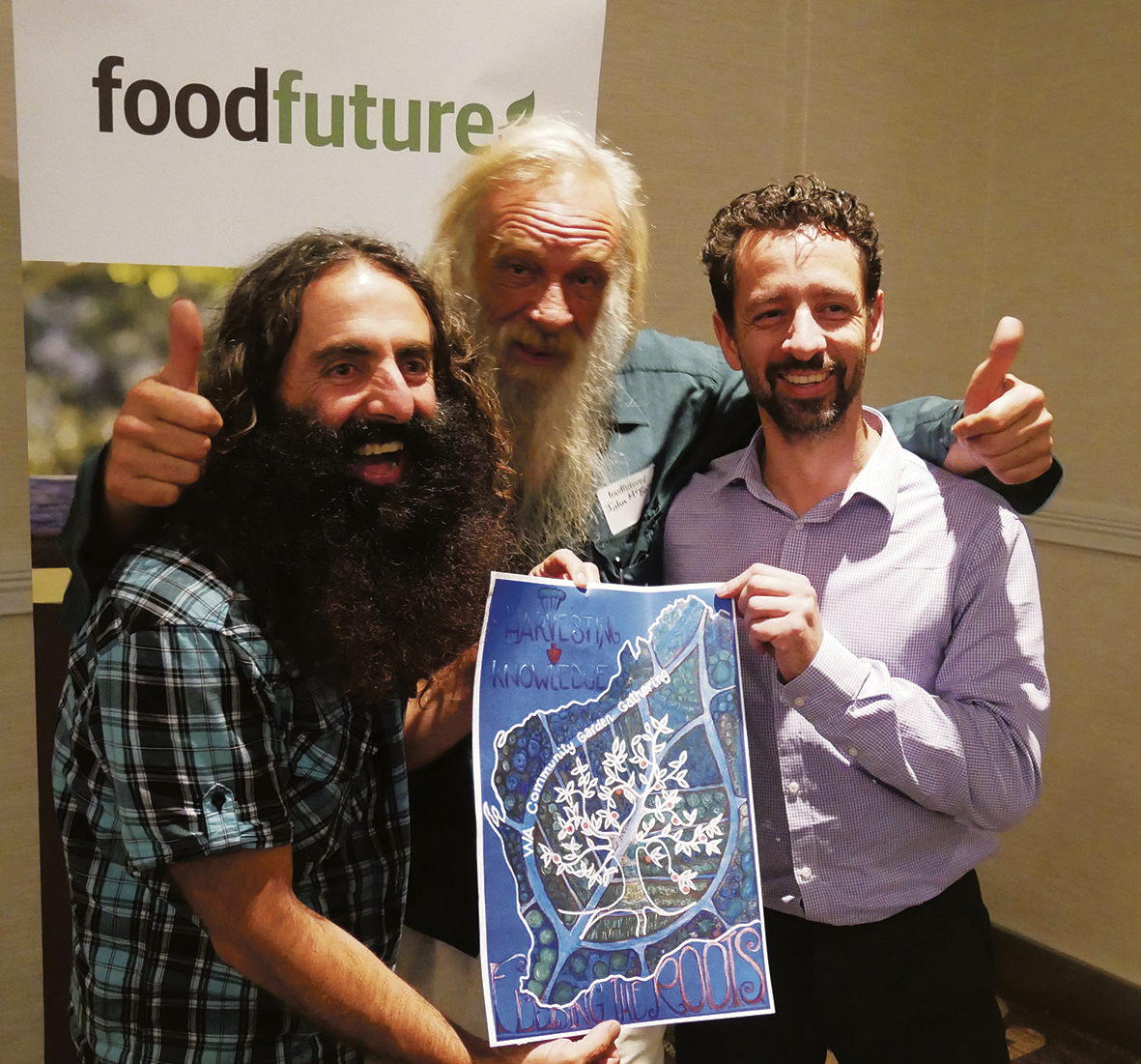There were more questions asked than answers given at Perth NRM’s inaugural Foodfuture forum held at the Parmelia Hilton, Perth on Tuesday 14 November. Starting the discussion about our future food security here in the west was the primary purpose of the event where key stakeholders, including local government representatives and policy makers mingled with grower group leaders, community garden trailblazers and agricultural consultants.
But firstly: who actually knew our food security was under threat? Surely not the average consumer who happily loads their supermarket trolley each week with nary a thought for its origin. However DAFWA research suggests that our local food supply delivers energy dense, nutrient poor foods at a cheaper price than nutritious foods, not only compromising low income families but discouraging the population in general from making healthy choices.
Although here in the West we produce more food than our local population can consume, much of it is for export. As a result, WA must import as much food in value as it exports! To add to this dilema, our farm land is under threat from a variety of issues, including urban sprawl, lack of water, climate change and land degradation resulting from poor farming practice.
After an official opening by the Minister for Agriculture and Food, Hon Alannah MacTiernan, the forum began – with a diverse range of speakers.
In his presentation to the group Andrew Weinert from Niche Agribusiness explained that one of the main reasons primary producers are struggling to make a buck is lack of value-add. Although we produce large quantities of wheat and potatoes for example, we immediately ship them east for production, only to bring them back in the more palatable (and more expensive) forms of beer and chips. As a state we are quite capable of being self-sufficient, but our reliance on the eastern states to process our food is costing us exorbitant food miles as well as our independence.
Dr Rachel Carey from the University of Melbourne introduced the Foodprint Melbourne project she has helped develop, explaining how Melbourne has begun to build a more resilient food bowl for the city. Delivering findings from their research Rachel explained how proper planning means that loss of Melbourne’s food bowl is not inevitable as the city grows, and that the city can plan for a resilient local food bowl that provides healthy food for a growing population, promotes a vibrant regional food economy and acts as a buffer against future food system shocks.
Practical solutions such as planning horticultural land areas close to the city to grow perishable fruit and vegetables, and collaborating with the city to utilise recycled water for farming are positive outcomes that have emerged the project.
Speaker Heather Percy spoke about the Peel food bowl, and the huge investment that has been made into the peri-urban farming in the area. Securing water access supporting agricutural innovation, packing and value-adding have been areas of research. By contrast, the Northern Growth area has received very little government support, and Wendy Newman spoke about how their group is actively working towards this region reaching its potential as well.
Later in the afternoon, speakers covered topics of marketing, margins and understanding the consumer.
Ending the day was the enigmatic Costa Georgiadis, the celebrity landscape architect and advocate for a secure food futue.
Costa’s down to earth reminder of how important growing, preparing and eating good food is to us as happy healthy humans, brought the discussion literally back down to earth. His passion and enthusiasm for building urban gardens, teaching children where their food comes from and changing policy around food and agriculture in Australia was inspiring.
His message that convenience is the enemy of a positive food culture was an overall take-home message that is worth remembering. In our all-too-busy life, it’s so easy to choose convenience over quality, processed and packaged over the more time-consuming, home-made, and cost-saving over locally produced – but at what cost – its certainly food for thought!








